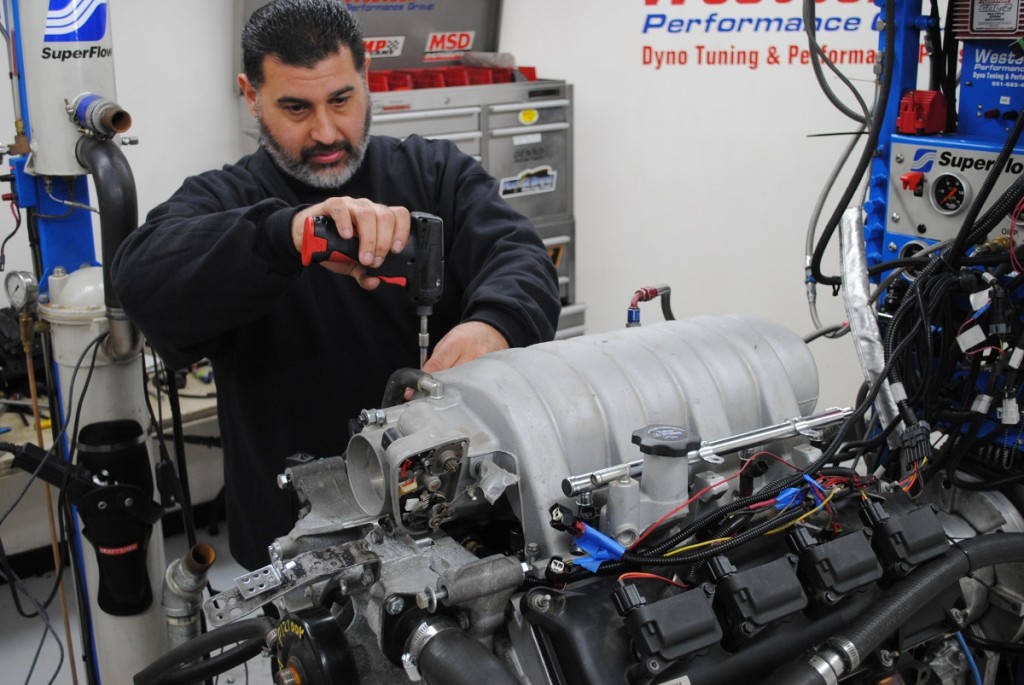Words and Photos By: Richard Holdener
While the title is catchy and full of alliteration, the reality is that this test is less about carburetors and computers than different styles of intake manifolds. Sure, one happens to be for use with carburetion and the other electronic fuel injection, but the method of fuel delivery is less important to this test than the overall difference in design. Truth be told, the carbureted SV intake used for this test could also be run in injected form using a four-hole throttle body and injectors, but the carbs vs computers had a nice ring to it.
For this test, we pit a stock 5.7L Magnum intake and throttle body against an aftermarket carbureted intake used by Mopar on their crate motors. The major difference between the two intakes was the factory EFI intake was designed for a 5.7L Hemi-powered Magnum application and the single-plane, SV carbureted intake was designed for the crate motor. Obviously, a great deal more R&D went into the design of the Magnum than the cast-aluminum, single-plane manifold, but the difference had less to do with the amount of effort than the basic design.
The intake manifold is a critical element in power production for any internal combustion engine. Much more than just maximum power, the intake design works in conjunction with the cam timing and head flow to shape the overall power curve. The intake design, specifically the runner length, is tuned to produce power over a given rpm range. Optimum power comes by matching the runners to the desired operating range (hopefully one shared by the cam and to a lesser extent the cylinder heads). Should you mismatch even one of these major three power components, you might get away with having a less-than-stellar combination. Then again, you might just wind up with a motor that makes neither impressive torque nor horsepower. Though we did not run the test with this combination, it is interesting to note the tuning effect offered by intake runners remains consistent even under boost. An intake that offers the desired power curve on a normally aspirated motor will do so under boost.
The importance of intake tuning for a given combination is made evident by all three major U.S. manufacturers, as Ford, Chevy, and Dodge all offer different intake configuration for different applications (cars, trucks & performance vehicles). In the case of the modern Hemi, Dodge offered different intakes for the truck, Magnum, and SRT8 applications. That they would go to the cost and complexity of designing different intakes shows their importance.
The design of these modern intakes differs greatly from their carbureted counterparts of yesteryear. In the pre-EFI days of factory carburetion, production intakes were generally of the dual-plane design. The divided plenum and long(er) runners enhanced power production in the lower and middle portions of the power curve without sacrificing too much power at the top. For maximum peak performance on a carbureted motor, enthusiasts often swapped out the dual-plane intake for a common-plenum, single-plane design. Designed to enhance top-end power, the single plane was most effective when combined with wilder cam timing and ported heads.
The introduction of modern electronic fuel injection (especially multi-port) significantly altered intake designs. The dual-plane carbureted intakes were replaced by EFI systems designed to further enhance power production. Since the EFI intakes did not have to flow both air AND fuel, the designs were less limited in terms of packaging. This allowed engineers to produce long-runner manifolds designed to significantly enhance torque production and fuel mileage.
Like the GM LS family, the factory Hemi was blessed with an abundance of cylinder head flow, but limited by mild cam timing. To properly test the different intakes, we decided to upgrade the power output of the 5.7L Hemi pirated from a 2004 Ram truck. We started with increased displacement courtesy of a stroker crank and rods from Scat, combined with forged pistons from JE. The stroker and overbore pushed displacement of the 5.7L to 370 cubic inches (just under a factory 6.1L).
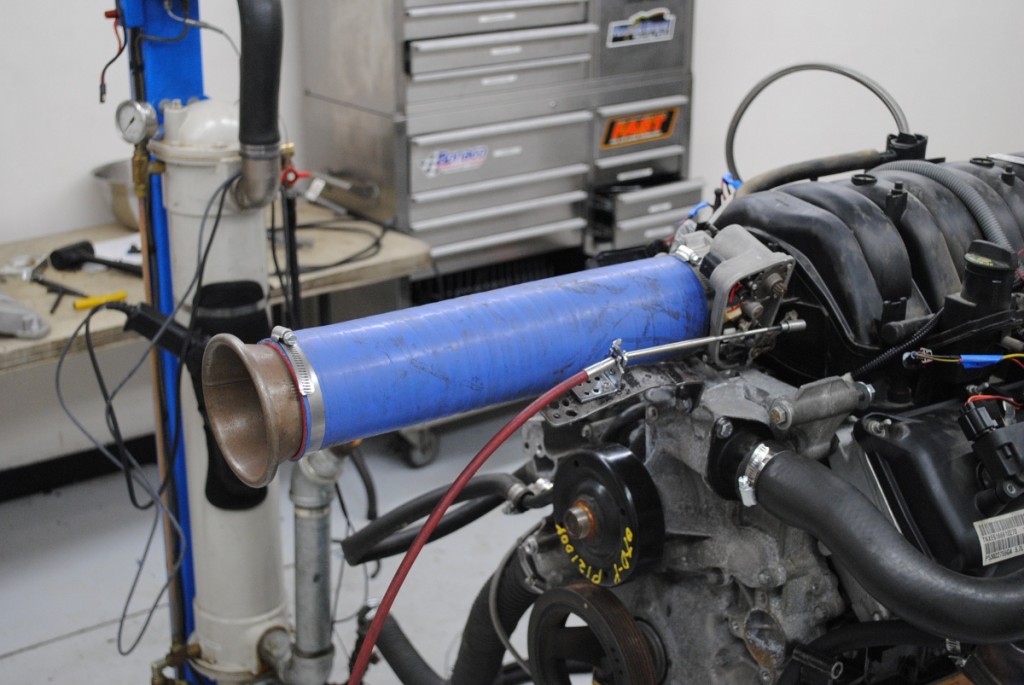
Here is the kind of testing that occurs when we have a few extra minutes of dyno time. This custom air intake system consisted of a simple, 3.5-inch section of tube connected to a radiused air entry. This simple addition to the EFI intake was worth an extra 4-5 hp and a like amount of torque.
Though not necessary for this test, the forged rotating assembly provided a bullet-proof short block that was capable of withstanding some serious punishment (we later added boost). To compliment the additional displacement, we installed a mild COMP 260H-13 cam. The Comp XFI hydraulic roller profile offered a .522/.525 lift split, a 208/212-degree duration split and a 113-degree LSA. Topping the stroker was a set of 5.7L Hemi heads that received a multi-angle valve job and a set of 26918-16 valve spring from COMP Cams. Finishing up the test mule was a Milodon oil pan, a set of SRT8 exhaust manifolds, and the FAST XFI/XIM management system. The stand-alone management system was used to control timing and fuel supplied by 36-pound FAST injectors. Before testing, it was also necessary to convert the drive-by-wire throttle body to manual operation. The FAST system was employed on both the EFI intake and the carbureted motor to control ignition timing.
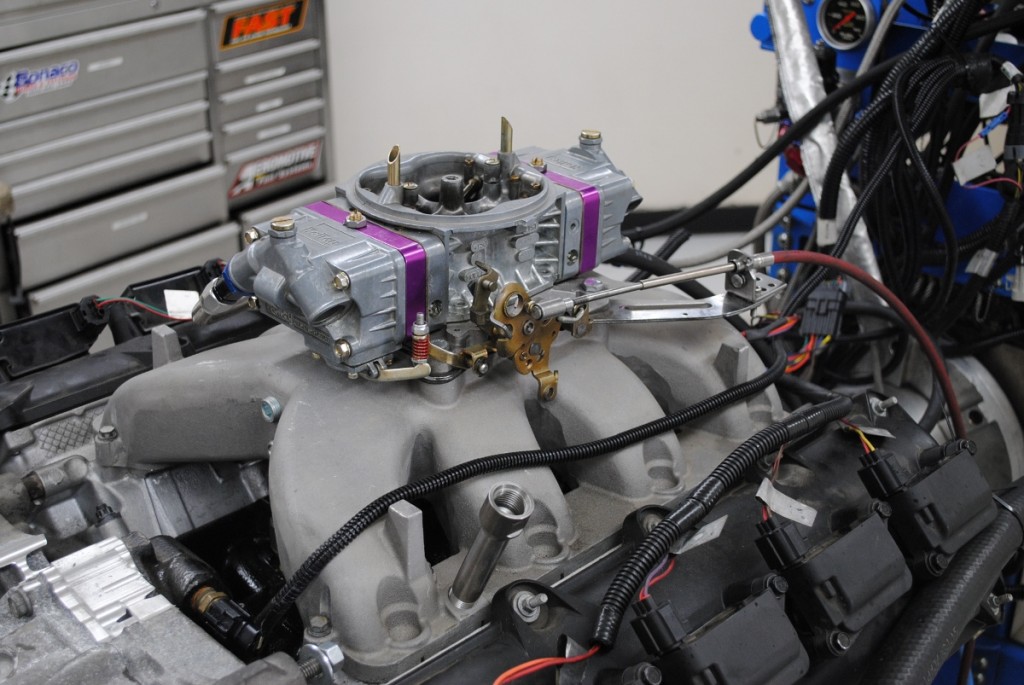
Representing the carb contingent was this single-plane, carbureted XV intake. Used by Mopar on their crate Hemi, the single-plane was fed by a Holley 750 HP carburetor.
First up was the long-runner 5.7L Magnum intake. After dialing in the tune, the Magnum-equipped Hemi stroker pumped out peak numbers of 434 hp and 463 lb-ft of torque. The torque curve was impressive, and the fact the combination produced a higher peak torque value than horsepower was a clear indication we were running a mild cam profile.
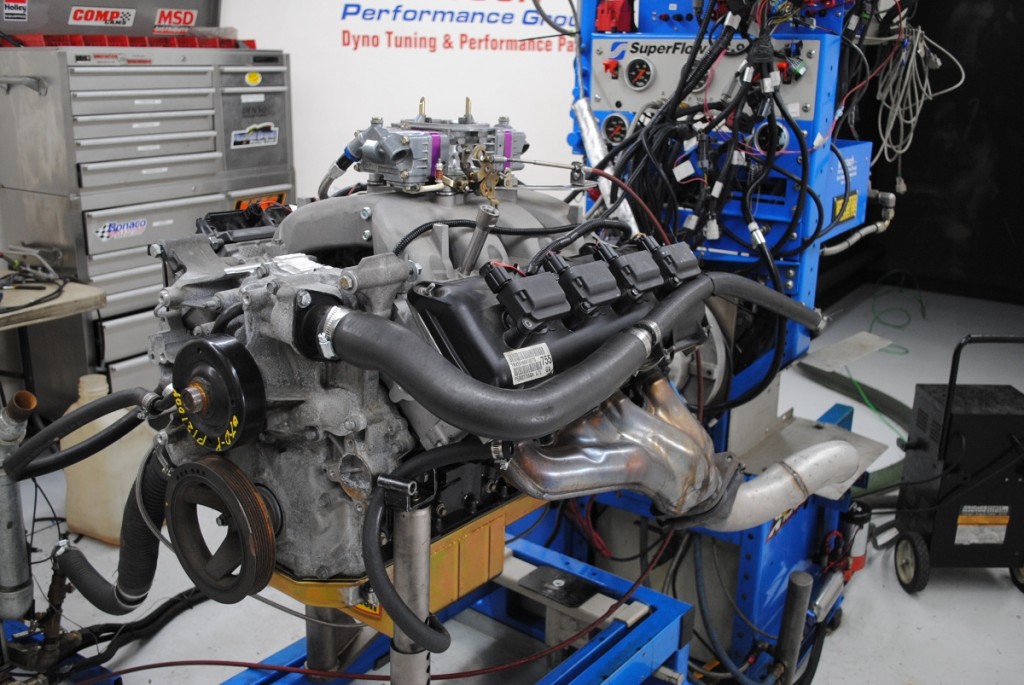
Looking at peak power alone (443 hp at 6,300 rpm), the carbureted intake was the horsepower champion, but did that make it a winner? The single-plane managed only 410 lb-ft of torque compared to the 463 lb-ft offered by the Magnum, not to mention the fact the Magnum offered more power from 3,000-5,900 rpm. In any kind of race, the computer would kill the carb!
True to form, the long-runner, Magnum EFI intake offered a broad curve, besting 400 lb-ft from 3,000 rpm (possibly even lower had we pulled it that low) to 5,700 rpm. The torque was especially impressive once we installed the single-plane, carbureted SV intake. The single-plane showed its true nature by besting the Magnum for peak power (443 hp vs 438 hp), but just look at the remainder of the power curve. The Magnum offered an additional 53 lb-ft of torque (463 vs 410 lb-ft), but the difference was even greater lower in the rev range.
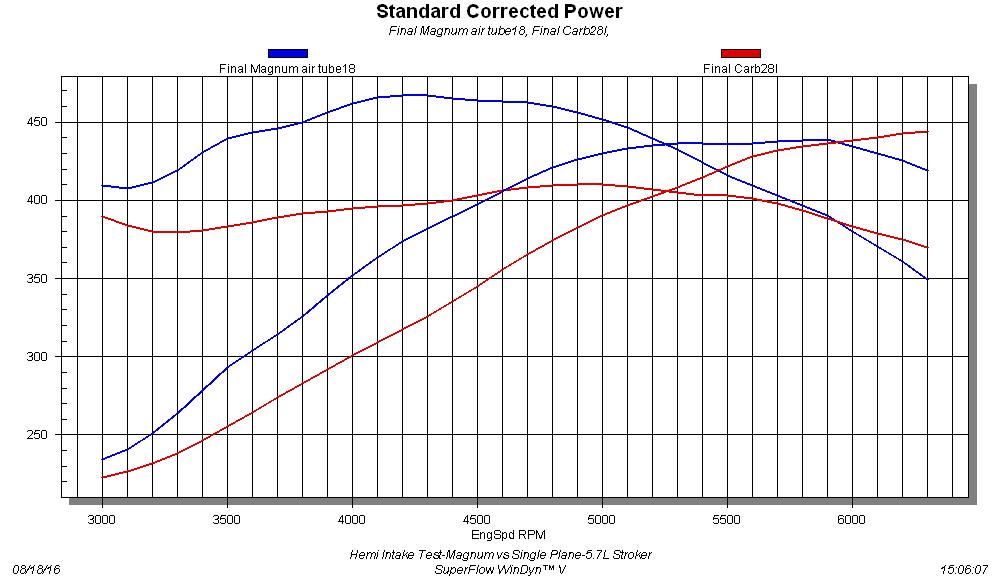
Initially, you might be tempted to choose the single-plane intake if someone told you it made 443 hp compared to just 438 hp for the factory Magnum, but here is where taking a closer look at power production really pays off. Only above 6,000 rpm did the single-plane (carb intake) offer more power, and then only by a scant 5 hp. Lower in the rev range, the EFI Magnum intake offered gains that approached 70 lb-ft. In any kind of acceleration contest, the Magnum-powered motor would walk (make that run) away from the single plane.
What this test shows is that the right intake on your Hemi can make all the difference in the world, and, if you have a crate (or other) Hemi with a single-plane, unless its an all-out, high-rpm race motor, you might be better off Packin a Magnum.
Sources: COMP Cams, compcams.com; FAST, fuelairspark.com; JE Pistons, jepistons.com; L&R Automotive, lnrengine.com; Lucas Oil, Lucasoil.com; SCAT, scatcrankshafts.com



